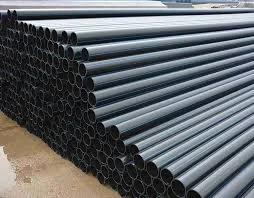Aug . 13, 2024 12:16 Back to list
Exploring the Benefits and Applications of HDPE Duct Pipes in Modern Infrastructure Solutions
The Advantages and Applications of HDPE Duct Pipe
High-Density Polyethylene (HDPE) duct pipes have become a popular choice in various industries due to their remarkable physical properties, versatility, and cost-effectiveness. HDPE is a type of thermoplastic that is known for its high strength-to-density ratio, making it an ideal material for pipe systems. The use of HDPE duct pipes can be seen across numerous applications ranging from telecommunications to water distribution. In this article, we will explore the benefits of HDPE duct pipes and their various applications.
One of the most significant advantages of HDPE duct pipes is their resistance to corrosion and chemical exposure. Unlike traditional metal pipes, HDPE does not rust or corrode when exposed to various environmental conditions or chemicals. This characteristic significantly increases the lifespan of the duct system, reducing the need for frequent replacements and maintenance. As a result, organizations can enjoy lower operational costs over time.
The Advantages and Applications of HDPE Duct Pipe
Another noteworthy benefit of HDPE duct pipes is their smooth interior surface. This smoothness not only allows for a higher flow rate and reduced friction but also decreases the likelihood of blockages. In applications such as telecommunications, where data transmission speed is crucial, the increased efficiency of HDPE duct pipes can make a significant difference. Furthermore, the reduction in blockages means that maintenance requirements are lower, contributing to enhanced performance.
hdpe duct pipe

HDPE duct pipes also exhibit excellent impact resistance, making them ideal for underground installations. They can withstand external loads, such as those from heavy machinery or vehicular traffic, thereby ensuring durability and reliability. This impact resistance is particularly beneficial in urban settings where infrastructure interactions are frequent.
In the realm of telecommunications, HDPE duct pipes are widely used for housing fiber optic cables and other communication lines. Their ability to protect sensitive cables from environmental threats is invaluable. Moreover, the duct system allows for easy future upgrades and modifications, as adding new cables can be accomplished with minimal disruption, thanks to the duct's flexibility.
In the water management sector, HDPE duct pipes are employed for stormwater management and drainage systems. Their ability to resist corrosion and withstand heavy loads makes them an ideal choice for these applications. Additionally, HDPE is environmentally friendly; many products are made from recycled materials, and the life cycle of HDPE pipes often ranks favorably in terms of sustainability.
While there are numerous advantages to using HDPE duct pipes, it is essential to consider proper installation techniques to maximize their benefits. Employing experienced professionals who understand local regulations and best practices can further enhance the longevity and effectiveness of the HDPE duct system.
In conclusion, HDPE duct pipes are a versatile and reliable solution for a multitude of applications across various industries. Their resistance to corrosion, flexibility, lightweight nature, smooth interior, and impact resistance make them an ideal choice for telecommunications, water distribution, and drainage systems. As industries increasingly focus on sustainability and cost-effectiveness, the adoption of HDPE duct pipes is likely to continue rising, reinforcing their status as a preferred material for modern infrastructure projects. Whether you are planning a new installation or upgrading existing systems, considering HDPE duct pipes can be a smart and beneficial choice for the future.
-
Durable Glossy PVC Rigid Sheet | Premium High-Shine Panels
NewsAug.26,2025
-
Durable PP Rigid Sheet: Lightweight, Chemical Resistant Solutions
NewsAug.21,2025
-
PVC Grey Sheet for Extraction: Chemical Resistant & Durable
NewsAug.19,2025
-
Durable PVC Pipe Fittings for Plumbing & Irrigation Needs
NewsAug.18,2025
-
HDPE Steel Belt Reinforced Spiral Corrugated Pipe | High Strength
NewsAug.17,2025
-
HDPE Pipe Fittings: Durable, Leak-Proof Solutions
NewsAug.16,2025

